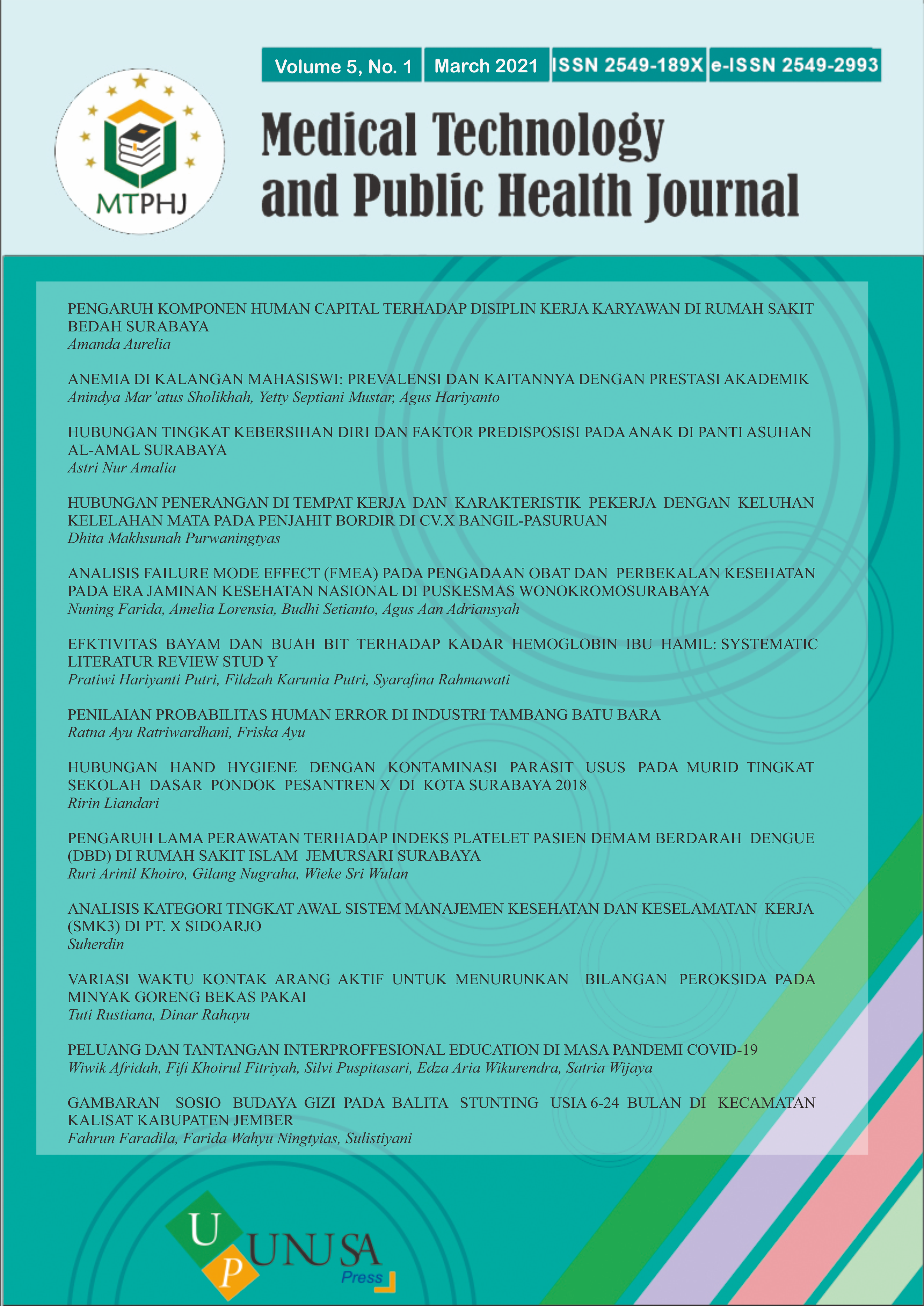VARIASI WAKTU KONTAK ARANG AKTIF UNTUK MENURUNKAN BILANGAN PEROKSIDA PADA MINYAK GORENG BEKAS PAKAI
Main Article Content
Abstract
Vegetable oil in the cooking process usually is used multiple times to fry food. This process exposes the oil to heat and oxidation. The oil itself is lipid. Lipid is a triglyceride, which means three carboxylic acids are bonded to one molecule of glycerol to form of ester. Exposing triglyceride to heat and oxidation causes it to deteriorate and break into smaller molecules such as aldehyde, ketones, and hydrocarbons. This molecule causes rancidity. Rancidity can be measured in terms of the amount of hydroperoxide presents in oil in mEq of O2/Kg. The peroxides present oxidize the iodide to iodine and the iodine is then titrated to a colorimetric endpoint using sodium thiosulfate with starch as an indicator. The amount of iodine produced is directly proportional to the peroxide value. The research has been conducted to reduce the peroxide value of used cooking oil using adsorption. The adsorbent used here is activated charcoal with a concentration of 3% and particle size of 100 Mesh. Contact time with oil is varied, ranged from 30 to 90 minutes. Statistic treatment of t-student test is performed between peroxide value before and after treatment and it is found that the difference is significant. That means active charcoal can decrease peroxide value. One way of ANOVA test among contact times (30, 60, 90 minutes) proves there is no significant difference, leading to the conclusion that activated charcoal at 3% and particle size 100 Mesh can decrease the peroxide value of oil in only 30 minutes of contact time.
Downloads
Article Details
Copyright (c) 2021 Medical Technology and Public Health Journal

This work is licensed under a Creative Commons Attribution-ShareAlike 4.0 International License.
References
Okparanta, Susan, et.al., Assesment of Rancidity and Other Physicochemical Properties of Edible Oils (Mustard and Corn Oils) Stored at Room Temperature, Journal of Food and Nutrition Sciences, 2018, 6(3), 70-75
Naseri, Simin, et.al., Evaluation of Peroxide Value and Acid Number of Edible Oils Consumed in the Sandwich and and Fast Food Shops of Qom, Iran in 2016, Archives of Hygiene Sciences, 2018, 7(2), 91-97
Mohammad-Khah, A., Ansari, R., Activated Charcoal: Preparation, characterization and Applications: A Review article, International Journal of ChemTech Research, Oct-Dec 2009, vol 1, no.4 859-864
Rahman, M.A., et.al., Preparation and Characterization of Activated Charcoal as an Adsorbent, Journal Surface Science and Technology, 2006, Vol.22, No. 3-4, 133-140
White, Pamela J., Adaptation of the AOCS official method for measuring hydroperoxides from small-scale oil samples, Journal of the American Oil Chemists’ Society, December 2001, vol 78, no.12 (20010, 1267-1269
Determination of the Peroxide Value, Developed by the IFRA (International Fragrance Association) Analytical Working Group, September 10, 2019
IUPAC Commission on Oil, Fats, and Derivatives, Standard Methods for the Analysis of Oils, Fats, and Derivatives, 1st Supplement to the 7th Edition
Tadda, Musa Abubakar, A review on activated carbon: process, application and prospects, Journal of Advanced Civil Engineering Practice and Research, 2016, 2(1), 7-13

